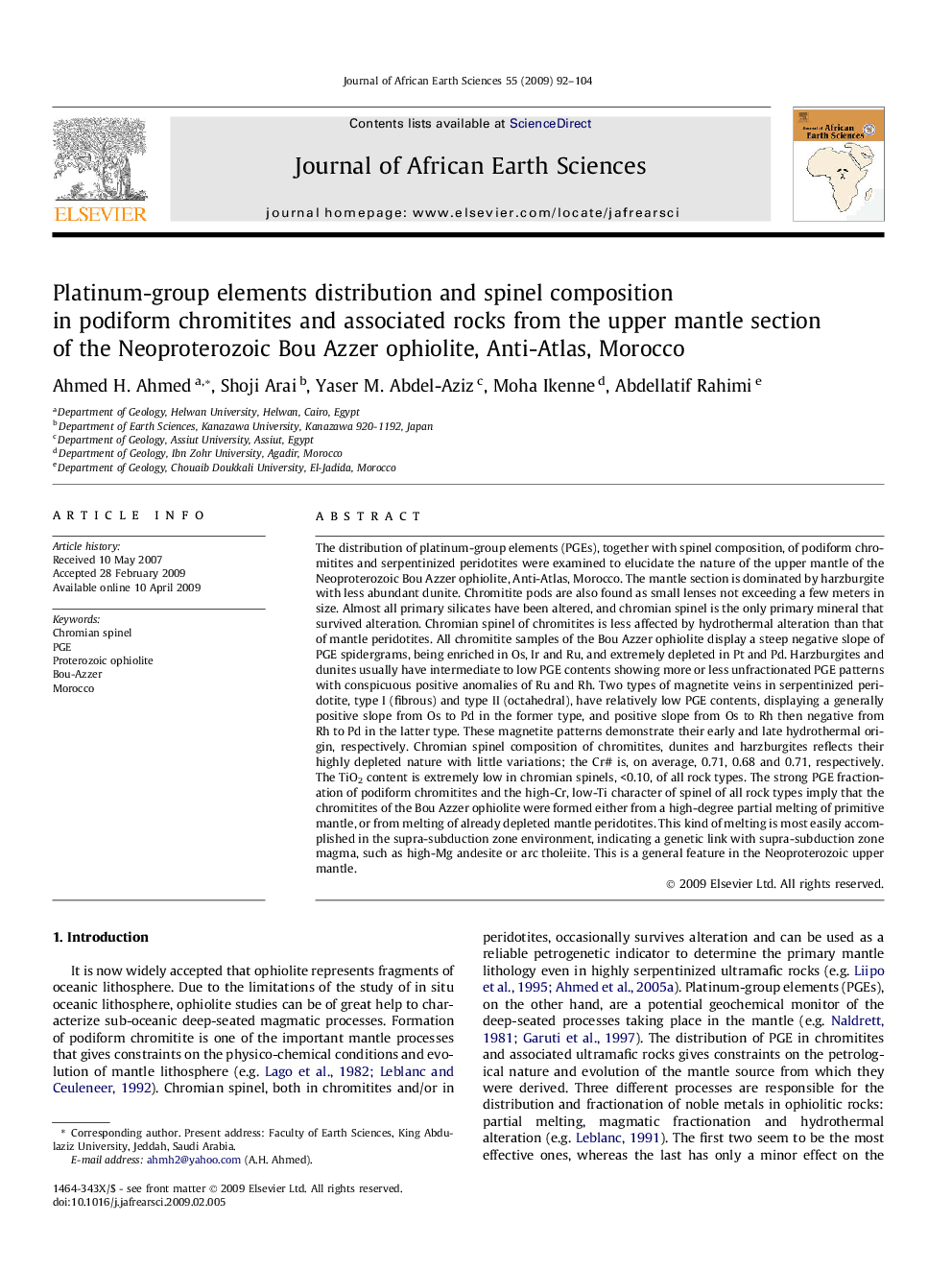| کد مقاله | کد نشریه | سال انتشار | مقاله انگلیسی | نسخه تمام متن |
|---|---|---|---|---|
| 4729632 | 1640249 | 2009 | 13 صفحه PDF | دانلود رایگان |

The distribution of platinum-group elements (PGEs), together with spinel composition, of podiform chromitites and serpentinized peridotites were examined to elucidate the nature of the upper mantle of the Neoproterozoic Bou Azzer ophiolite, Anti-Atlas, Morocco. The mantle section is dominated by harzburgite with less abundant dunite. Chromitite pods are also found as small lenses not exceeding a few meters in size. Almost all primary silicates have been altered, and chromian spinel is the only primary mineral that survived alteration. Chromian spinel of chromitites is less affected by hydrothermal alteration than that of mantle peridotites. All chromitite samples of the Bou Azzer ophiolite display a steep negative slope of PGE spidergrams, being enriched in Os, Ir and Ru, and extremely depleted in Pt and Pd. Harzburgites and dunites usually have intermediate to low PGE contents showing more or less unfractionated PGE patterns with conspicuous positive anomalies of Ru and Rh. Two types of magnetite veins in serpentinized peridotite, type I (fibrous) and type II (octahedral), have relatively low PGE contents, displaying a generally positive slope from Os to Pd in the former type, and positive slope from Os to Rh then negative from Rh to Pd in the latter type. These magnetite patterns demonstrate their early and late hydrothermal origin, respectively. Chromian spinel composition of chromitites, dunites and harzburgites reflects their highly depleted nature with little variations; the Cr# is, on average, 0.71, 0.68 and 0.71, respectively. The TiO2 content is extremely low in chromian spinels, <0.10, of all rock types. The strong PGE fractionation of podiform chromitites and the high-Cr, low-Ti character of spinel of all rock types imply that the chromitites of the Bou Azzer ophiolite were formed either from a high-degree partial melting of primitive mantle, or from melting of already depleted mantle peridotites. This kind of melting is most easily accomplished in the supra-subduction zone environment, indicating a genetic link with supra-subduction zone magma, such as high-Mg andesite or arc tholeiite. This is a general feature in the Neoproterozoic upper mantle.
Journal: Journal of African Earth Sciences - Volume 55, Issues 1–2, September 2009, Pages 92–104